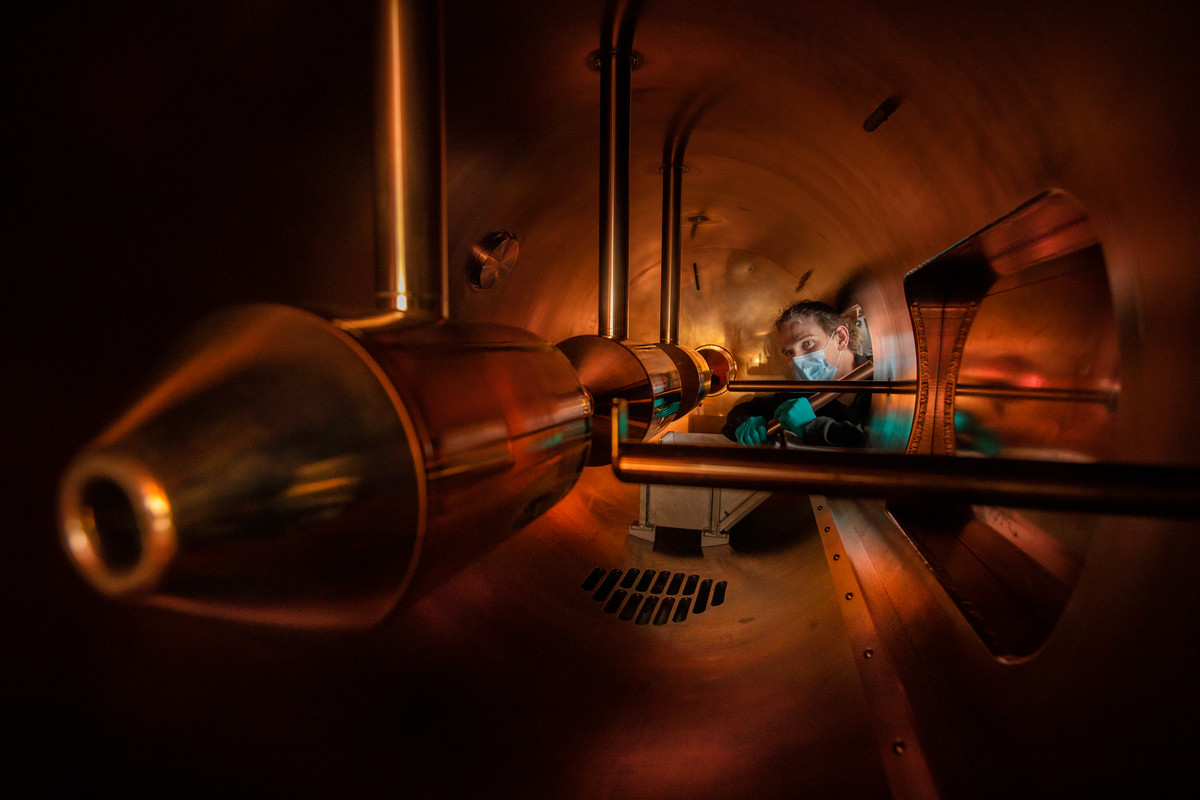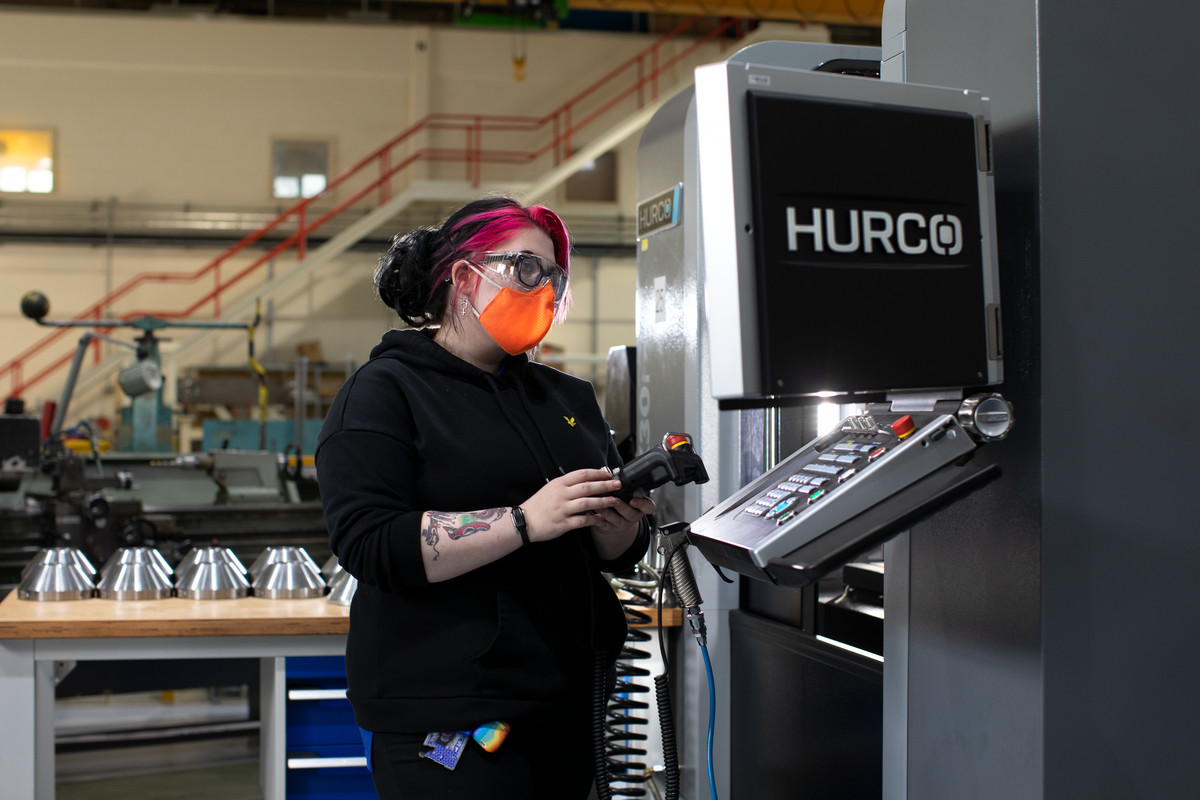The ISIS mechanical workshop's primary purpose is to provide support to keep the machine operational. This includes offering mechanical support across the accelerator and the beamlines, from repairing parts of the synchrotron to making modifications required for different scientific experiments. They are also involved in the development work required for some of ISIS' large engineering projects.
Working alongside the design office, they investigate how they can engineer specific components and build prototypes for testing. This testing is crucial as, with many parts of ISIS, the engineering is so unique that it may be the first time the staff have had to deal with a task like it. Adrian Hooper, mechanical engineering section leader, explains; “These are the types of job that you just do once in a working lifetime. There may be some staff who know what was done when the equipment was originally installed but, with the development of engineering techniques that has happened since then, there may be a completely different way to approach it now that is more appropriate."

One of the large projects that will be going through its installation phase during the upcoming ISIS long shutdown is the replacement of part of the linear accelerator: tank IV. These tanks contain a series of copper drift tubes that shield the beam while the voltage alternates. The original tank was built in 1976 and new drift tubes had not been manufactured since then.
“We have been building new drift tube prototypes in the workshop, and learnt a lot in the process." Adrian adds; “There are 23 different sized tubes in the tank but we've worked with the design team to develop a method to create spares in‑house from three oversized ones, rather than having to hold 23 spares. We've tried different ways of machining them and had them tested by metrology."
The ability to do this more complex machining has been gained by the installation of a lot of new machines. “We can do jobs that we weren't able to before," explains Adrian; “we are able to machine these large, complex pieces, and develop specialist expertise within the team."
The workshop sees a steady stream of apprentices as part of the STFC scheme rotations, and they also have a permanent apprentice within the team. As well as future-proofing the technical capabilities of the workshop, the installation of the new machines has benefitted the whole team, enabling growth of the skills base within the group.
 “We've seen the value to our staff as well as to our work of having the new machines – they are able to develop more and learn more transferable skills. As we're now operating the same software as the industry standard, it also means that new staff coming in are able to get up to speed more quickly. It's also been great to see what the apprentices can achieve using the new machines."
“We've seen the value to our staff as well as to our work of having the new machines – they are able to develop more and learn more transferable skills. As we're now operating the same software as the industry standard, it also means that new staff coming in are able to get up to speed more quickly. It's also been great to see what the apprentices can achieve using the new machines."
“This investment has given us the confidence to develop our capabilities further and look at different ways that we can take on new projects across ISIS. Where staff might usually go externally to commission new pieces of equipment, we'd like them to get in touch. Not just for the assembly side, but the team have experience with installation and can advise on this and make iterations."
The new investment and growth in the workshop is an indication of an increased focus on developing the technical skills base on site. “After all, we are the ones putting the 'T' in STFC!"
